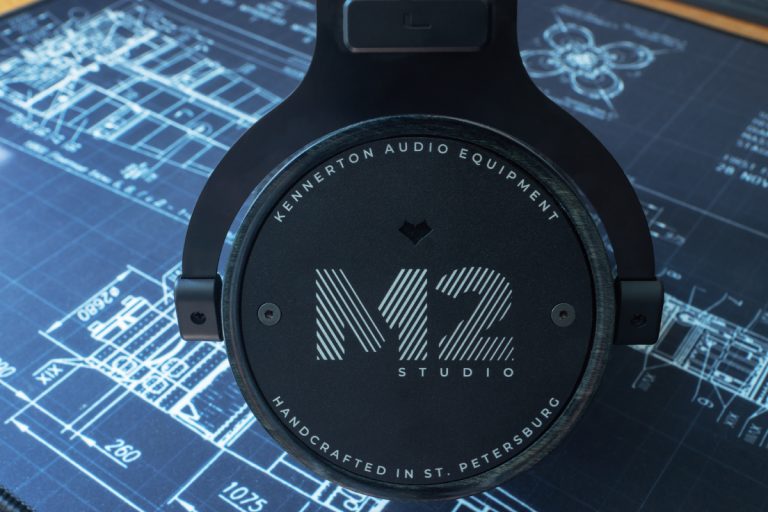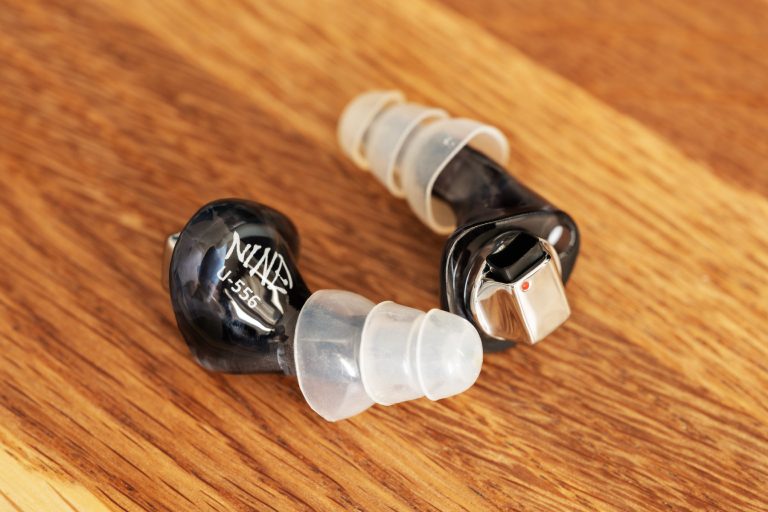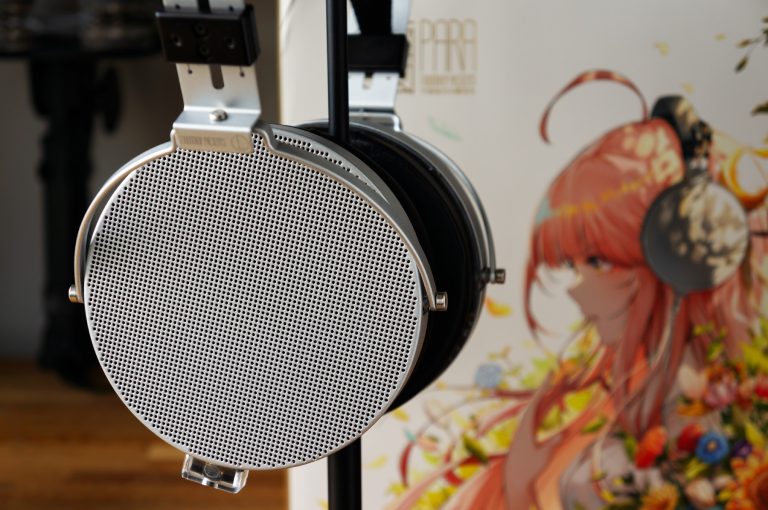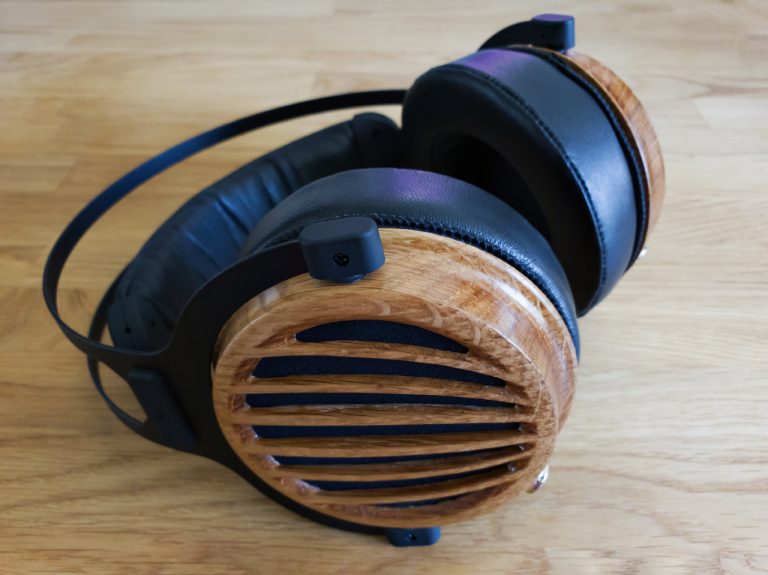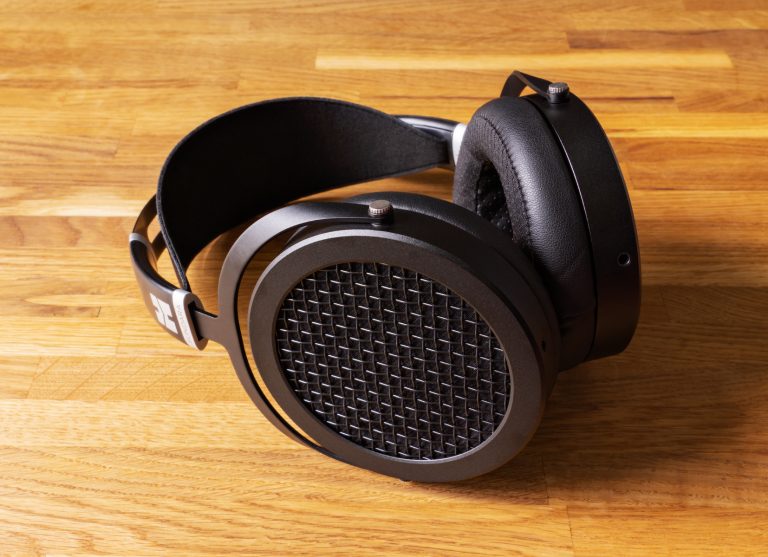Moondrop Meteor Earphones Review
The Meteor’s release turned out to be suspiciously quiet. Last year, the same thing happened to Concerto: the model happened to be so disappointing that it was almost immediately discontinued and moved from the category of headphones to one of audiophile oddities, around which groups of ‘those getting the message’ gather over time, and the rest of us, of course, ‘just don’t understand’. So, it seemed to me at some point that Meteor had suffered the same fate, but no, Dima (and thank you again, Dima!) sent them to me to try on. By the end of that same day, it became crystal clear that I needed to get my own sample.
I managed to buy the earphones for some hard-earned $360 of my own, with an average market price of $410 (plus some $40 of a customs duty).
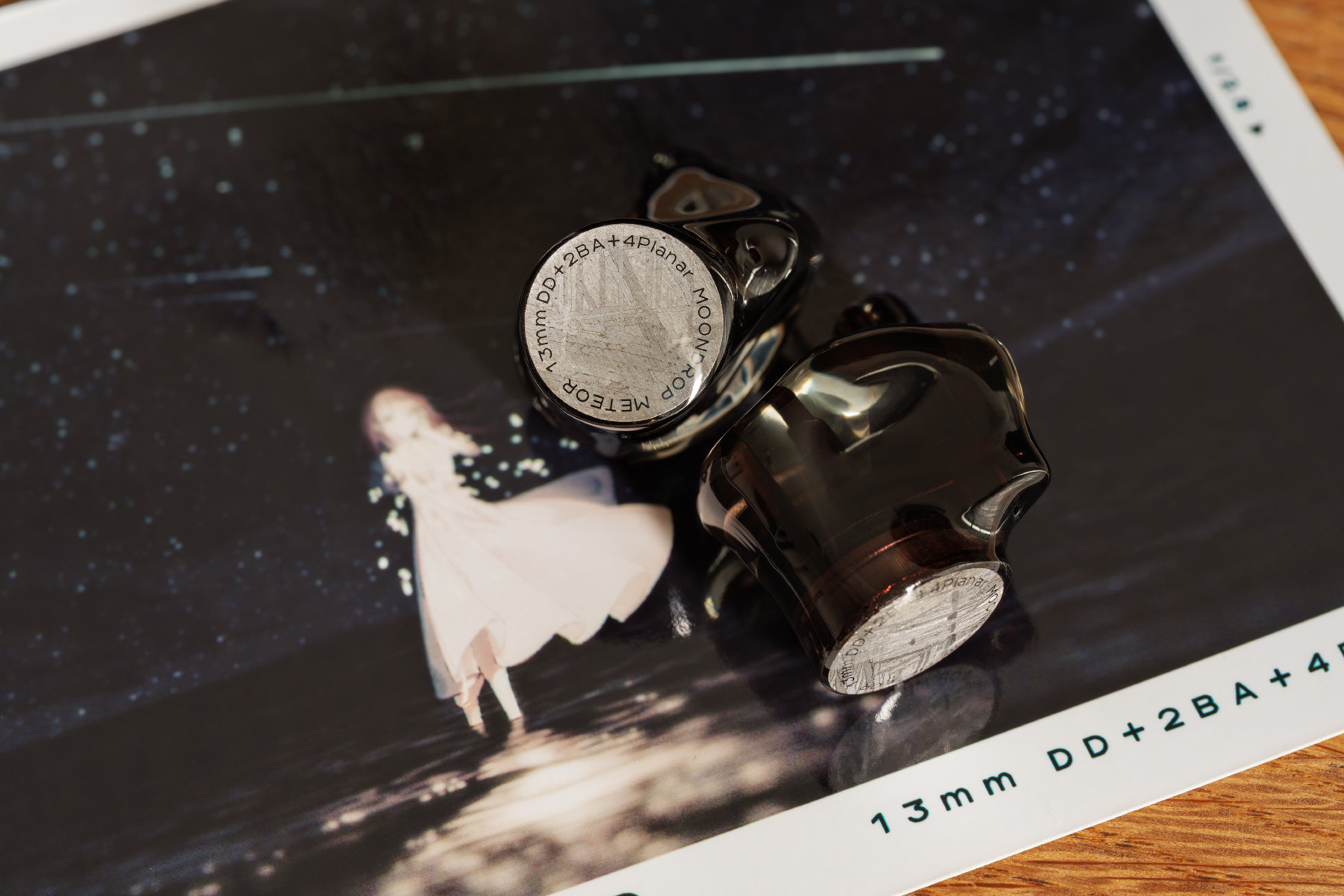
All but the sound
The kit, taking into account the price of the earphones, is a bit meager. The package is designed in conformity with the headphones, styled after cosmic minimalism.
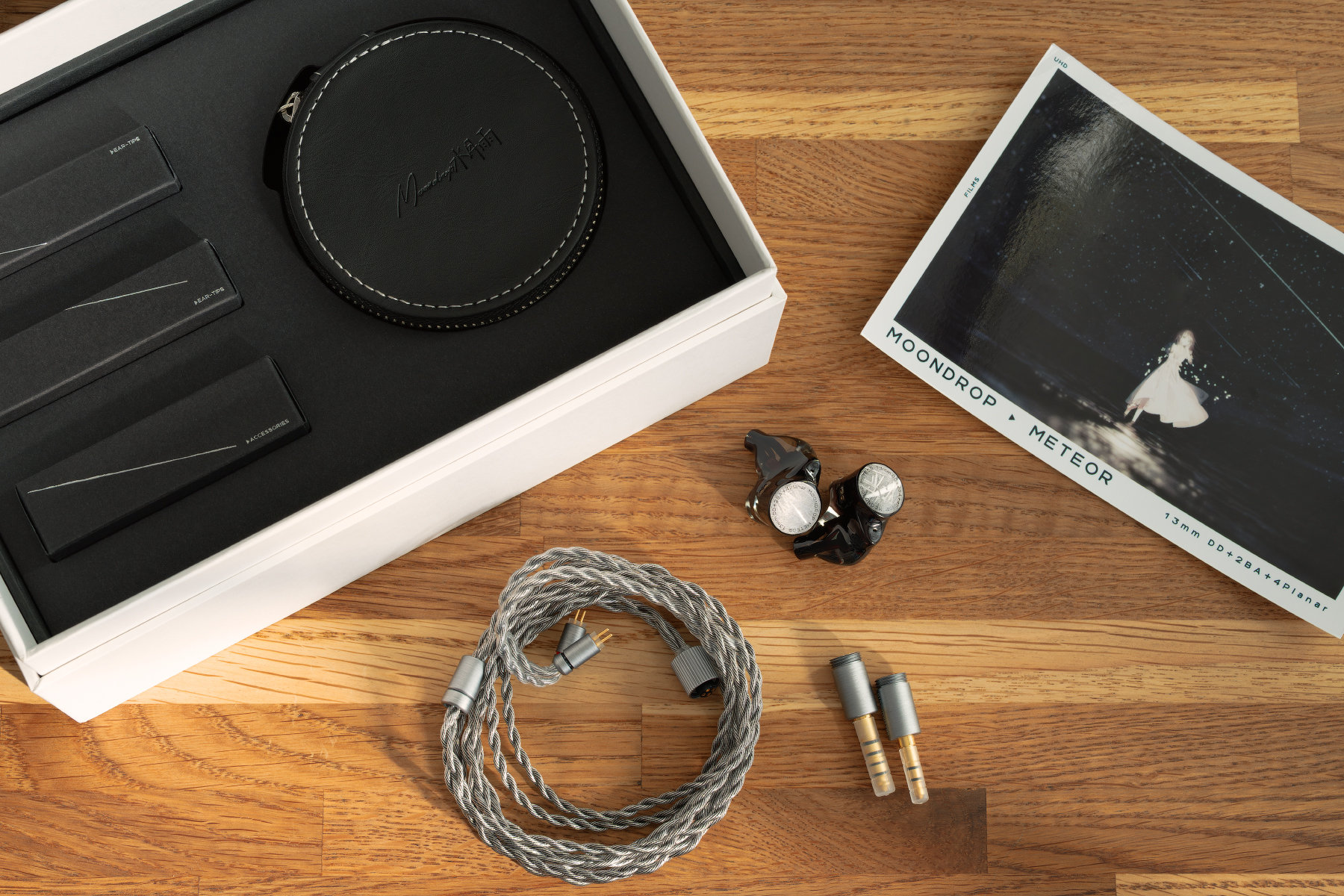
A large cardboard box, apart from lots and lots of room, contains as follows:
- a picture (literally printed on Kodak photo paper) with a girl mysteriously glowing in the mysterious darkness;
- a cable;
- eartips (6 pairs);
- a leather case.
There are no stickers, tools for changing filters, figurines or flashlights.
The cable has replaceable 3.5 and 4.4 mm connectors. The quality is excellent: the locking nut is tightened easily and has longitudinal notches to increase tenacity; the metal is pleasant by touch and totally stain-resistant; one of the connectors has a serial number on it.
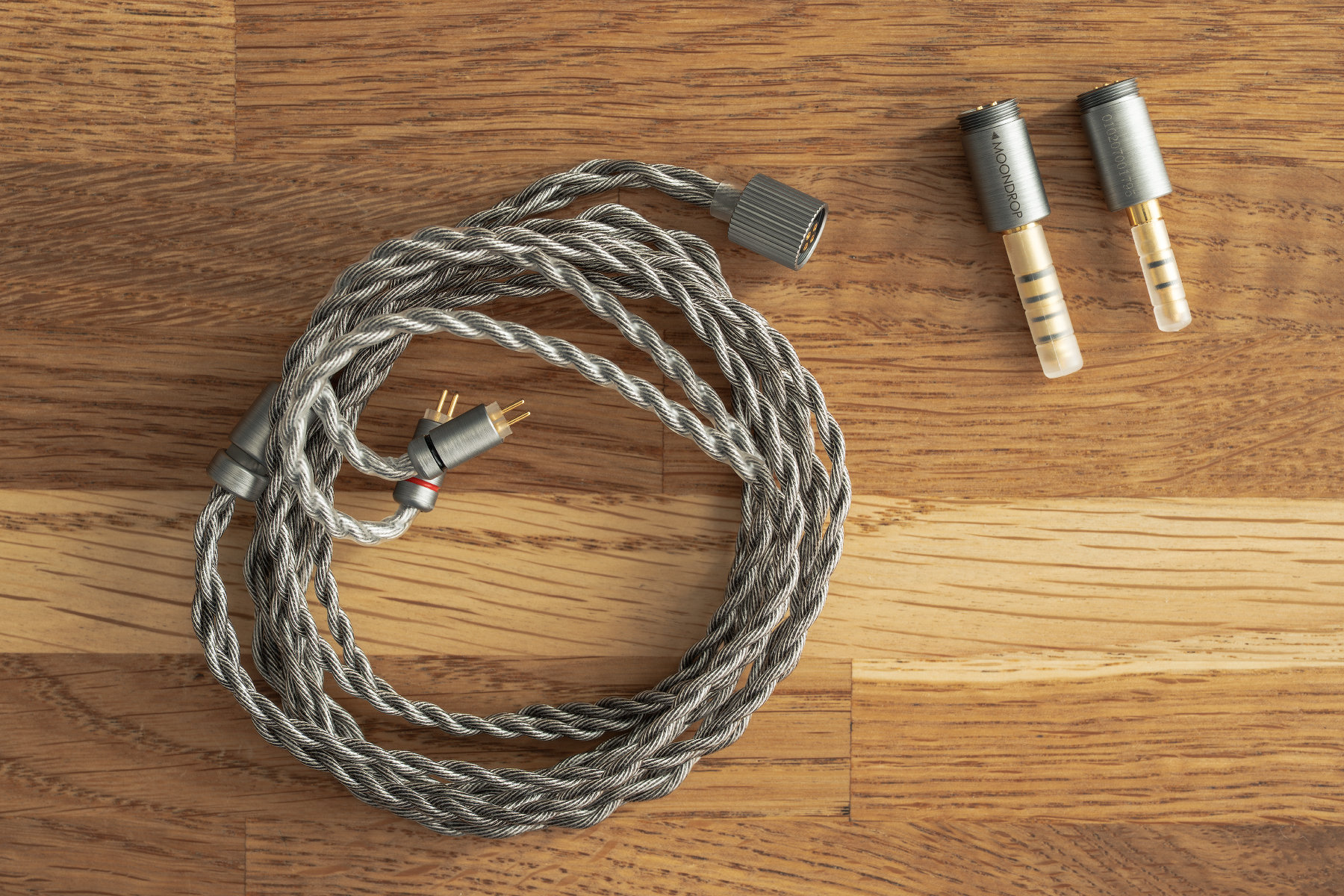
The case is just an ordinary, dumb case. And you and I know what a really good case for in-ear headphones is. It’s here.

Only two sets of eartips, 3 pairs each, are included:
- gray ones are silicone, like ones from Variations;
- transparent ones are made of thermoplastic elastomer, in the manner of AZLA SednaEarfit, manufactured by Softears, the Ultra Clear model.
Suddenly, there are no foam tips.
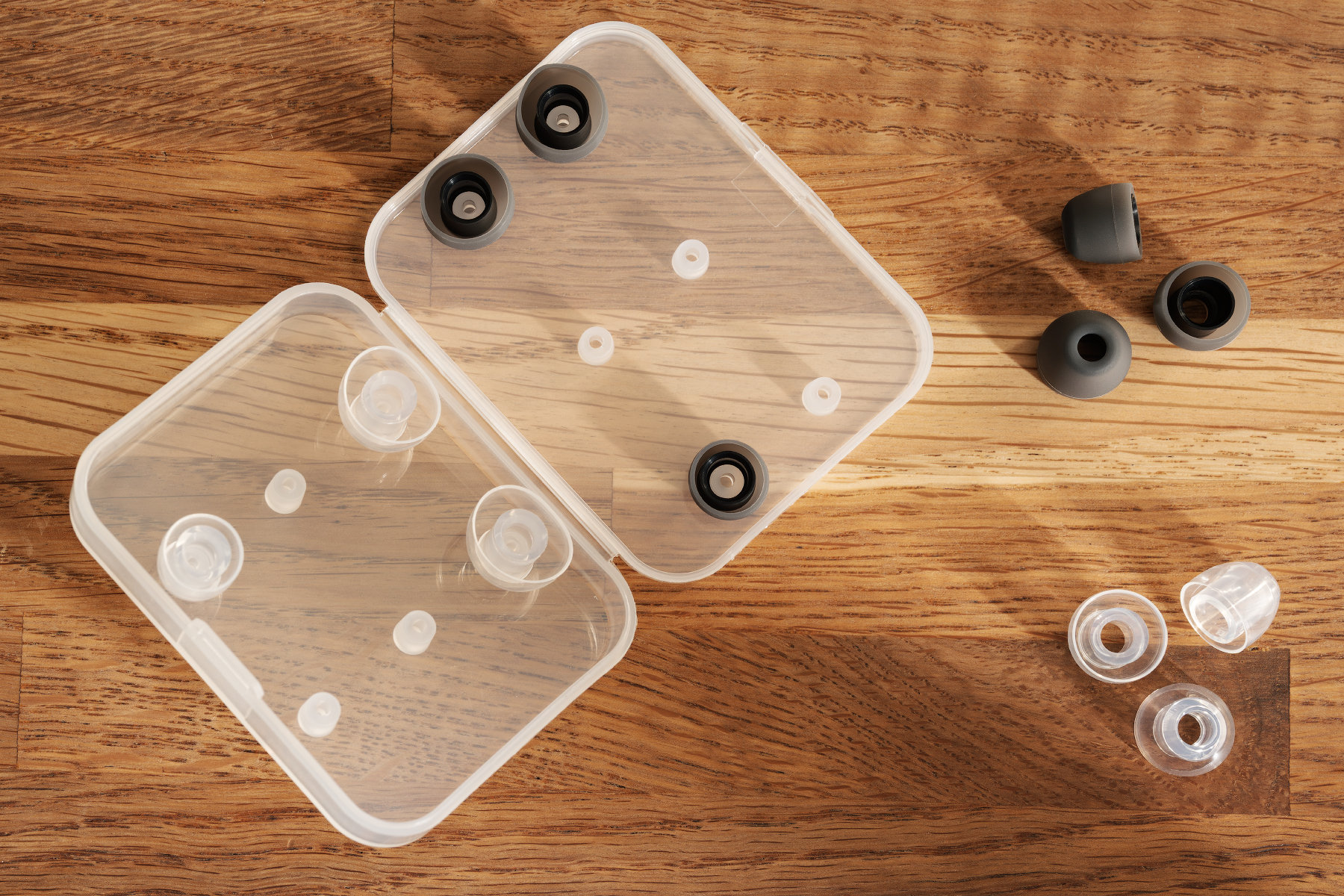
As for the earphones themselves, real pieces of meteorites are embedded in them, no kidding. Headfonics.com states a specific name of the meteorite, too. It’s Aletai, found in China as early as 1898, though the manufacturer itself doesn’t share this information. Be it Aletai or not – what matters is that this is a real meteorite, as is eloquently indicated by the Widmanstetten structure of the cuts that decorate the backplates.
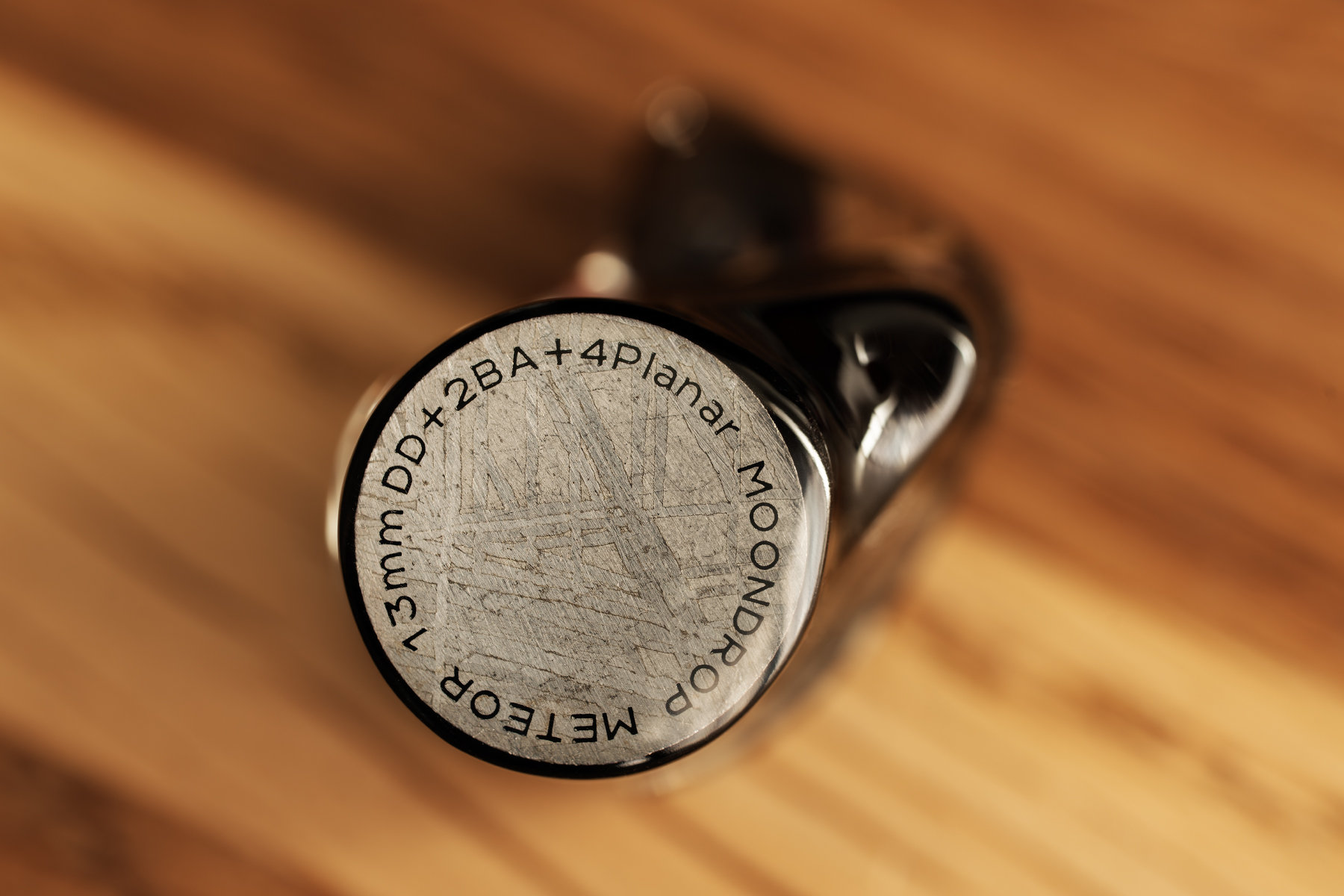
As there are 7 drivers stuffed inside the Meteor enclosures – 1 dynamic, 2 armature, and 4 planar ones – the enclosures turned out to be very large, probably the largest ones I’ve ever seen. Massive dynamic drivers did not fit inside the enclosures, so they were moved to separate ‘turrets’ that impressively stick out of the ears while wearing the earphones.
Comparisons of Meteor enclosures’ sizes with Chopin, ZERO RED and Blessing 3:

However, there’s no point to freak out because, upon a closer view, the enclosures are rather long than thick. If you have no problems with the placement of Blessing 3 or Variations in your auricles, then you won’t have any problems with Meteor either. Yes, they stick out of your ears a lot, but there are definitely no unpleasant sensations in the ears because of this. Moreover, a live experiment on my squaw has shown that even a person with very small ears can use these earphones quite successfully.
The enclosures are transparent, so you can see the kingdom of drivers with the roads of sound ducts in back-lit.
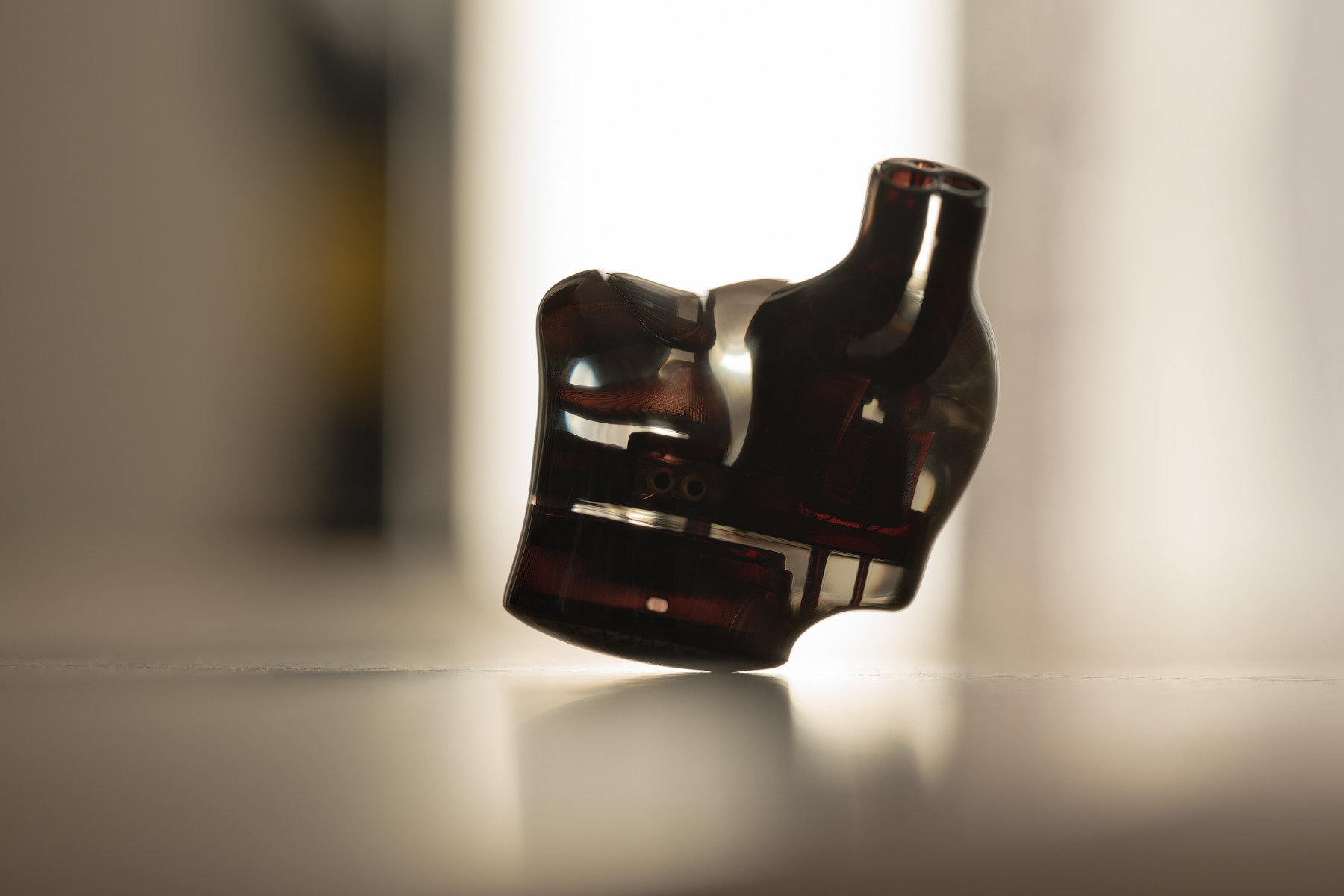
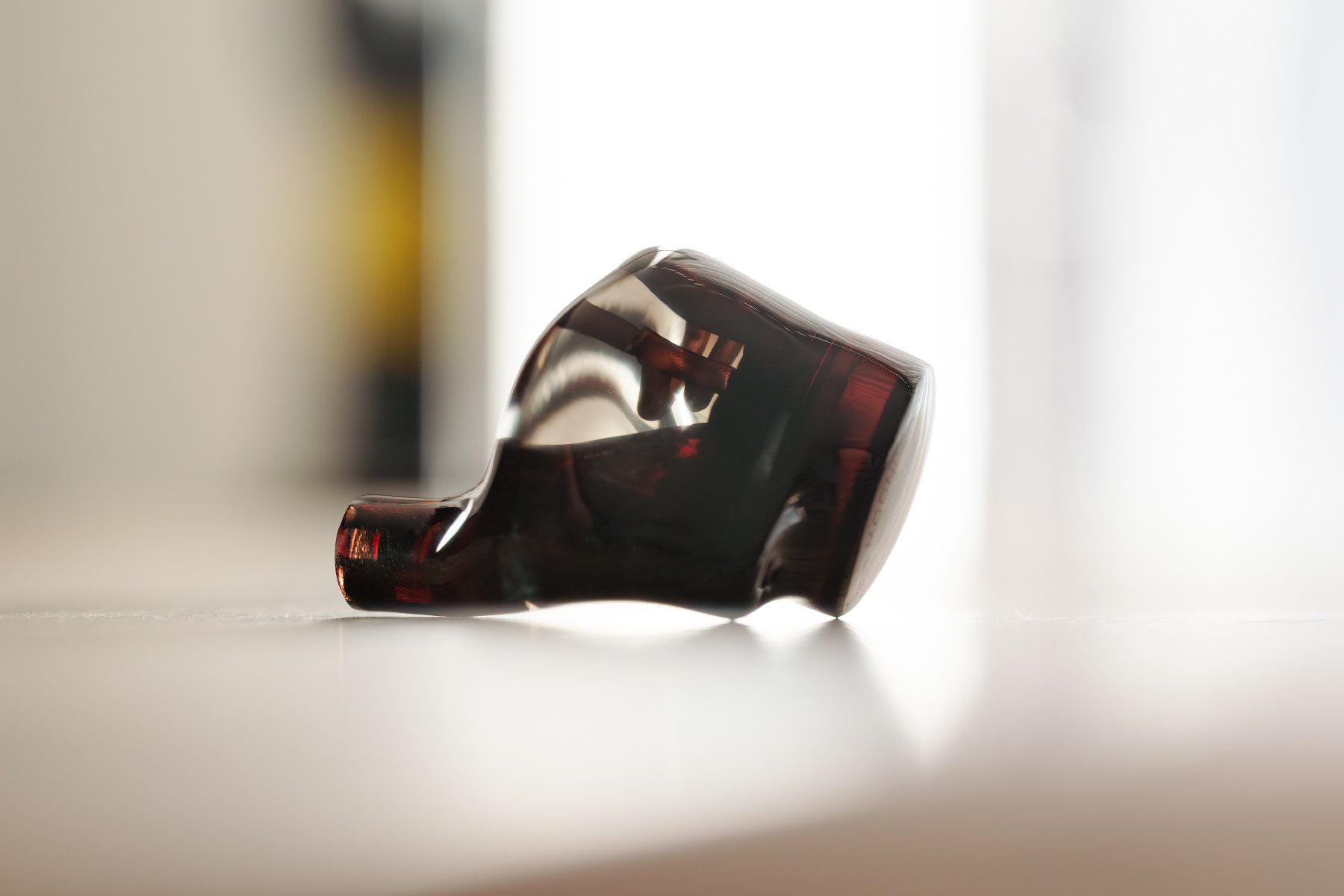
There are no meshes at the ends, but only the outputs from three groups of drivers with two filters.
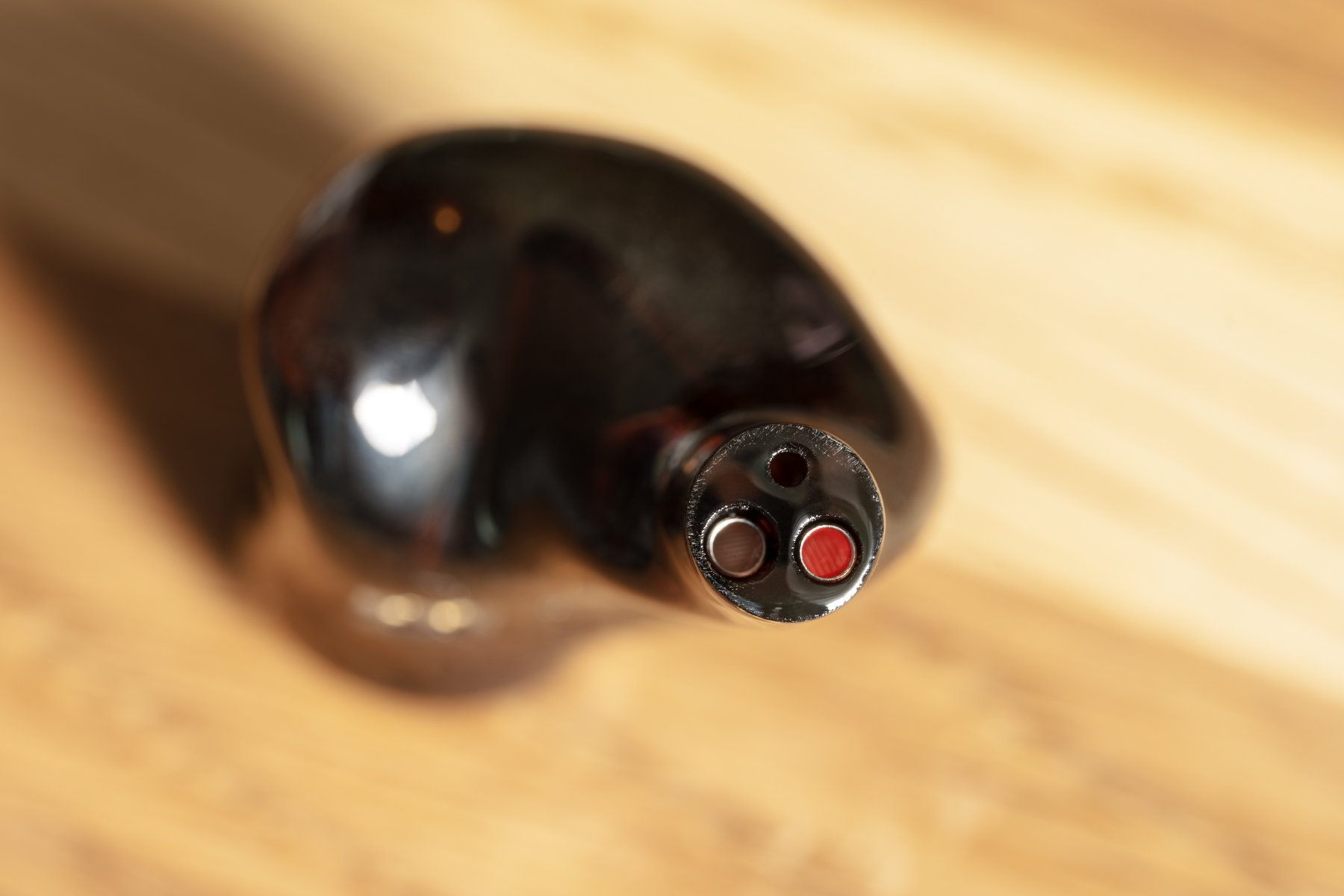
I have absolutely no ‘ergonomic complaints’ about Meteor. The only thing I can complain about is the lack of chamfering on the sound ducts. Well, that’s the Moondrop style, no other way: their headphones in the mid-upper price range are often devoid of this detail. Those eartips that I can recommend for a quite deep fit — Zhulinniao Zhu Rythme, Whizzer ET100AB – do not fall off the sound ducts. And the much-loved DIVINUS Velvet will fit in even more tightly if you come up with a way to stretch them onto smooth 6 mm thick sound ducts (I wonder if this is actually possible).
My general opinion about the ergonomics is that it’s good.
As for the required source power, 120 dB of sensitivity at 18 Ohms of self-impedance seem to imply that even the SZKOSTON CB1200AU will have enough power.
The sound
You can read about my measuring rig here. Listening was performed through RME ADI-2 DAC fs, Hiby R6 III, and Shanling M0 Pro.
Frequency response of Moondrop Meteor:
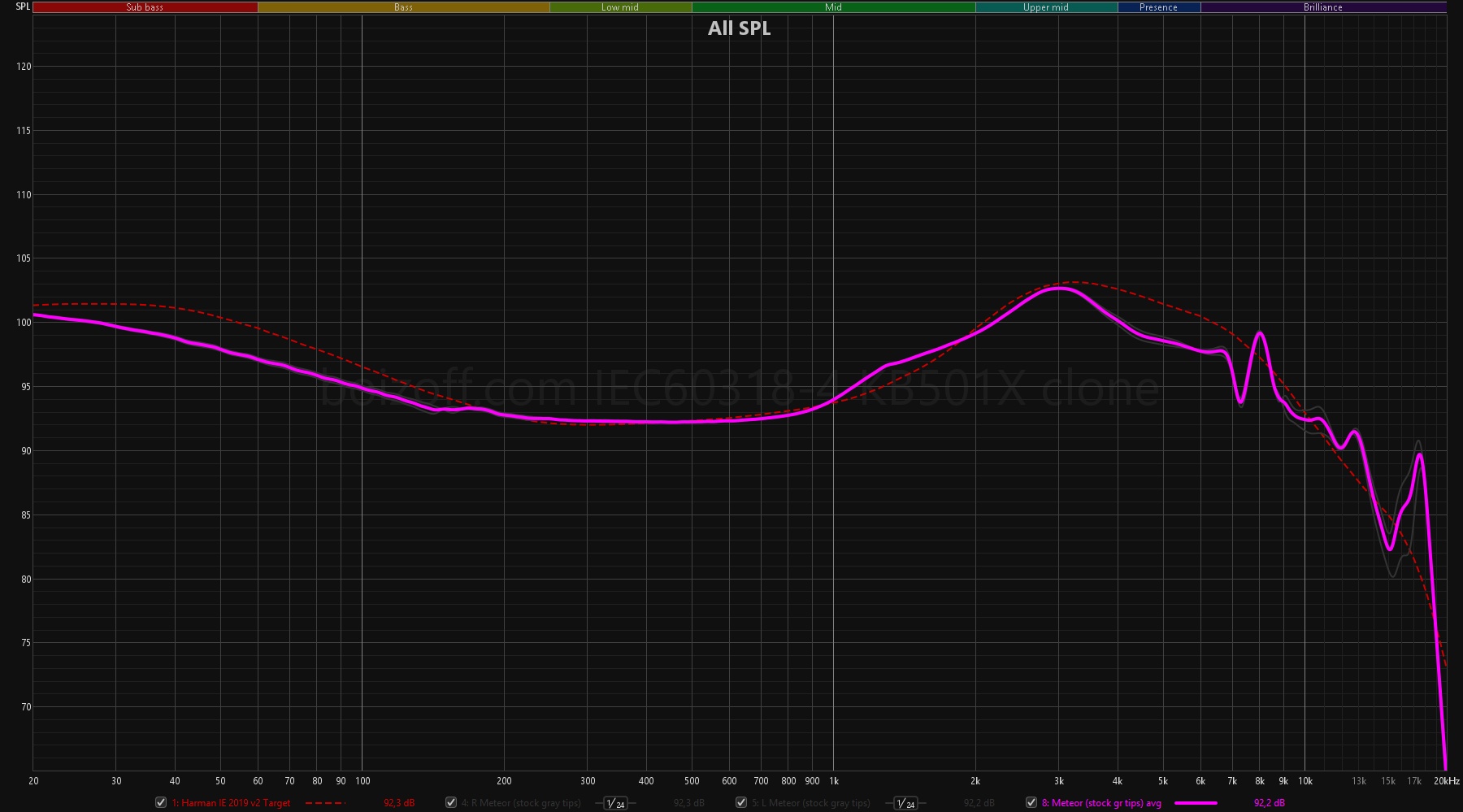
What can I comment on?
- Low frequencies increase almost linearly from 150 Hz to the left, but do not have the distinctive Harman accent;
- The range at about 1,300 Hz is slightly raised;
- Everything to the right of 3,000 Hz is very ‘smooth’, and even a slight accent at 8 kHz is almost inaudible.
This is a very smooth neutral sound delivery with slightly dipped bass, but just as much – ‘slightly’ — raised subbass. Plus, there’s a slight emphasis at 1,300 Hz, just like Kiwi Ears Orchestra Lite, TRI I3 MK3 and other near-neutral earphones have it.
Here’s nonlinear distortion at 94 dB with the ‘Use harmonic frequency as ref’ option turned off and on. In fact, the distortion doesn’t exceed 0.5%:
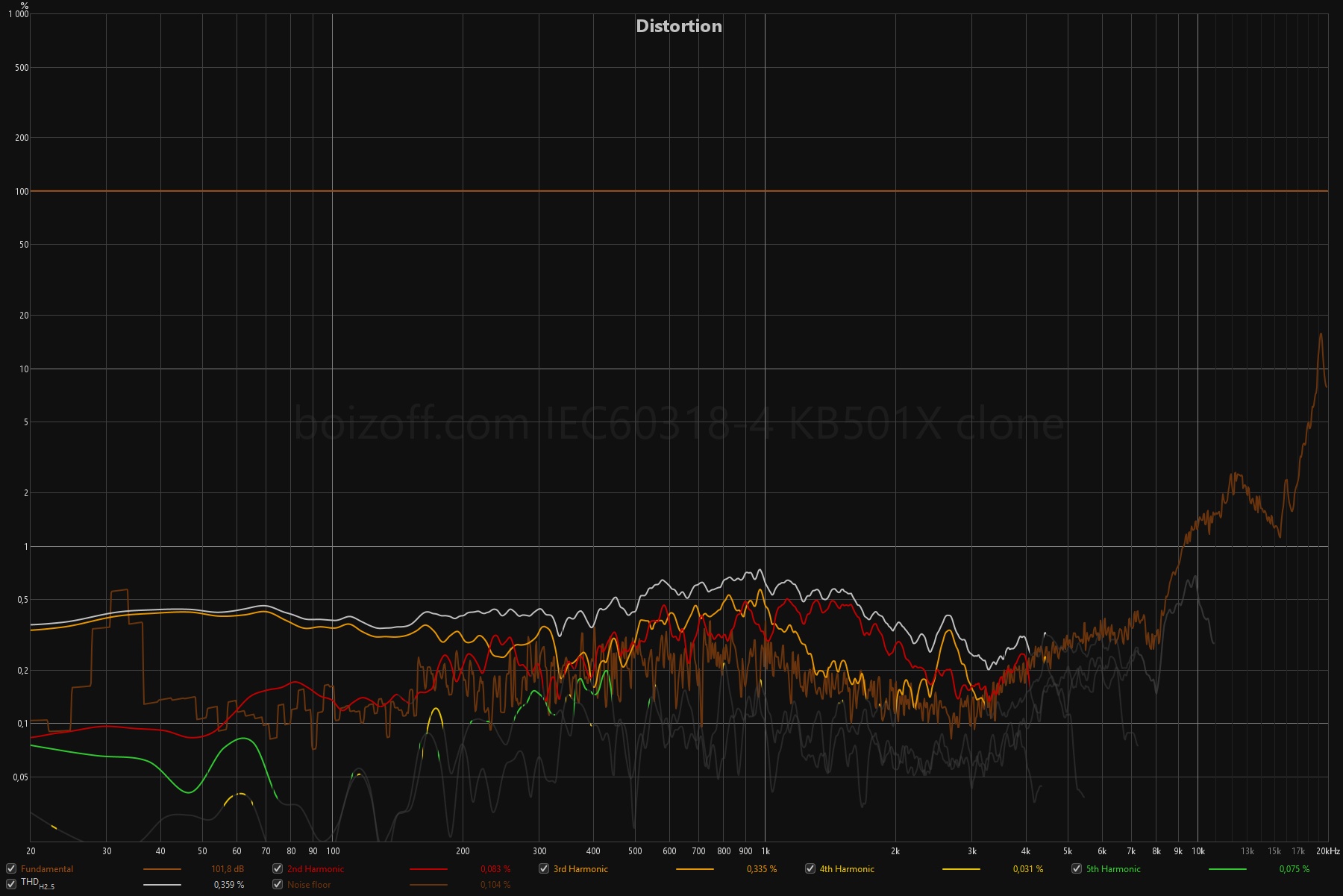
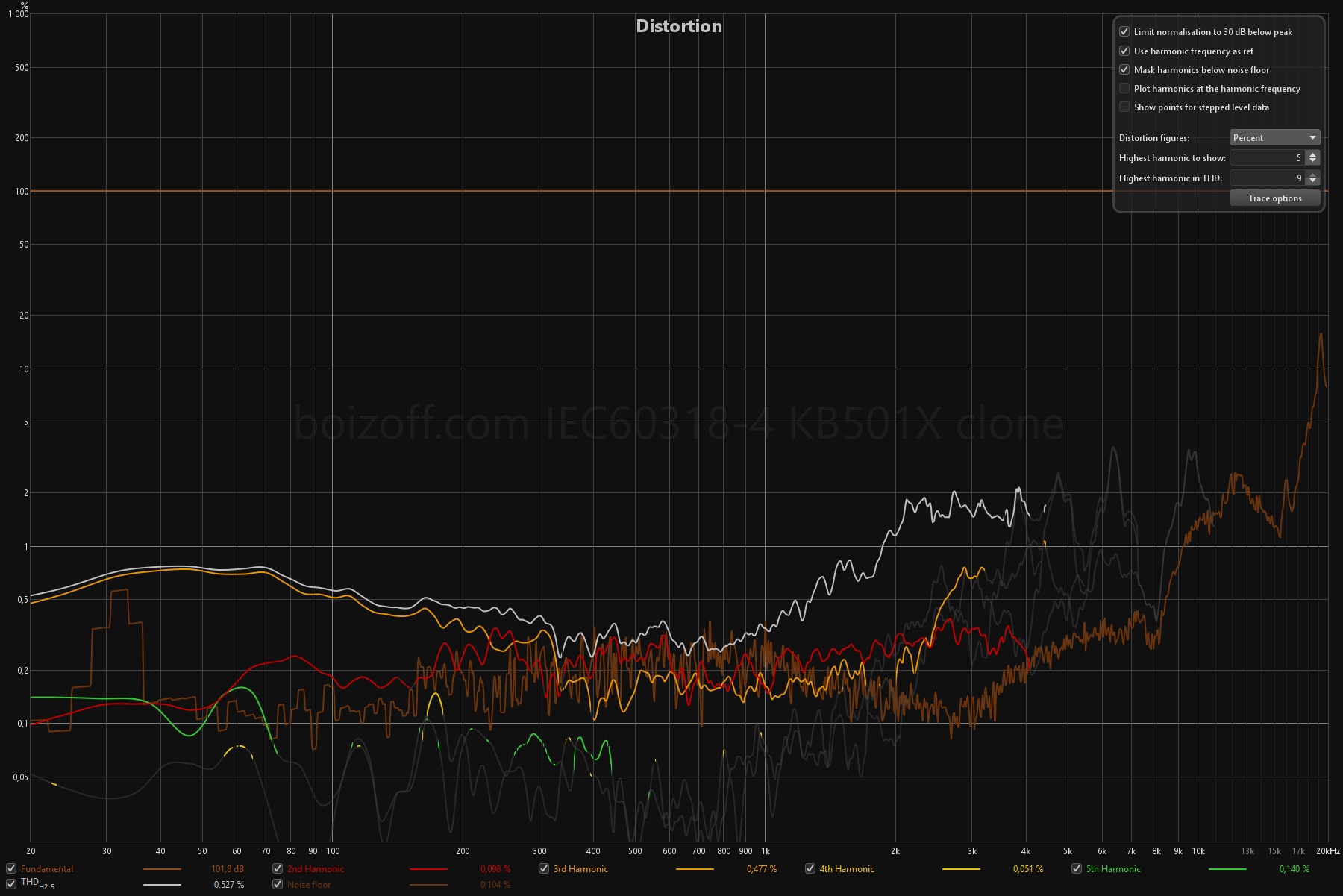
Nonlinear distortion at 104 dB with the ‘Use harmonic frequency as ref’ option turned off and on:
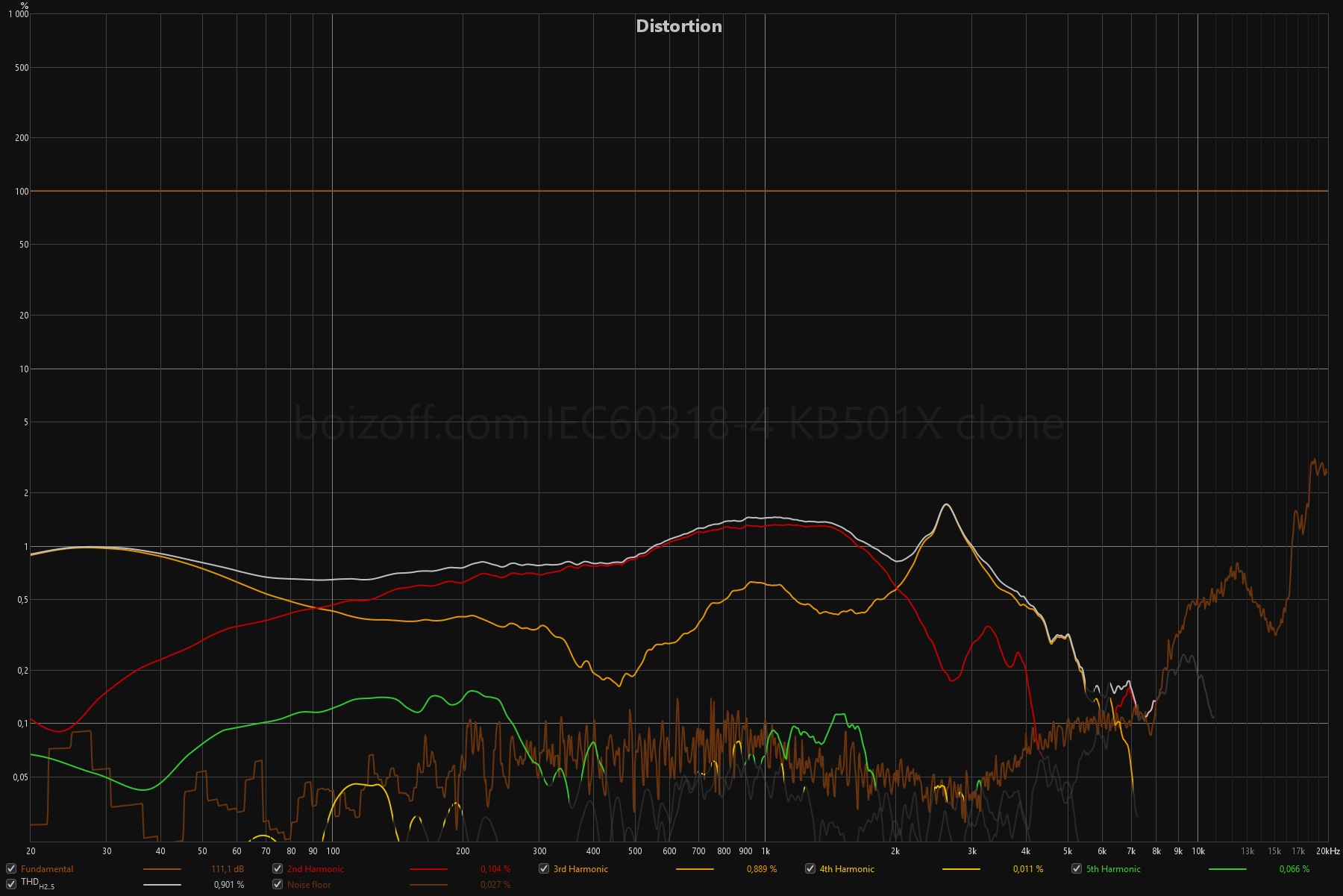

Minimum phase response:
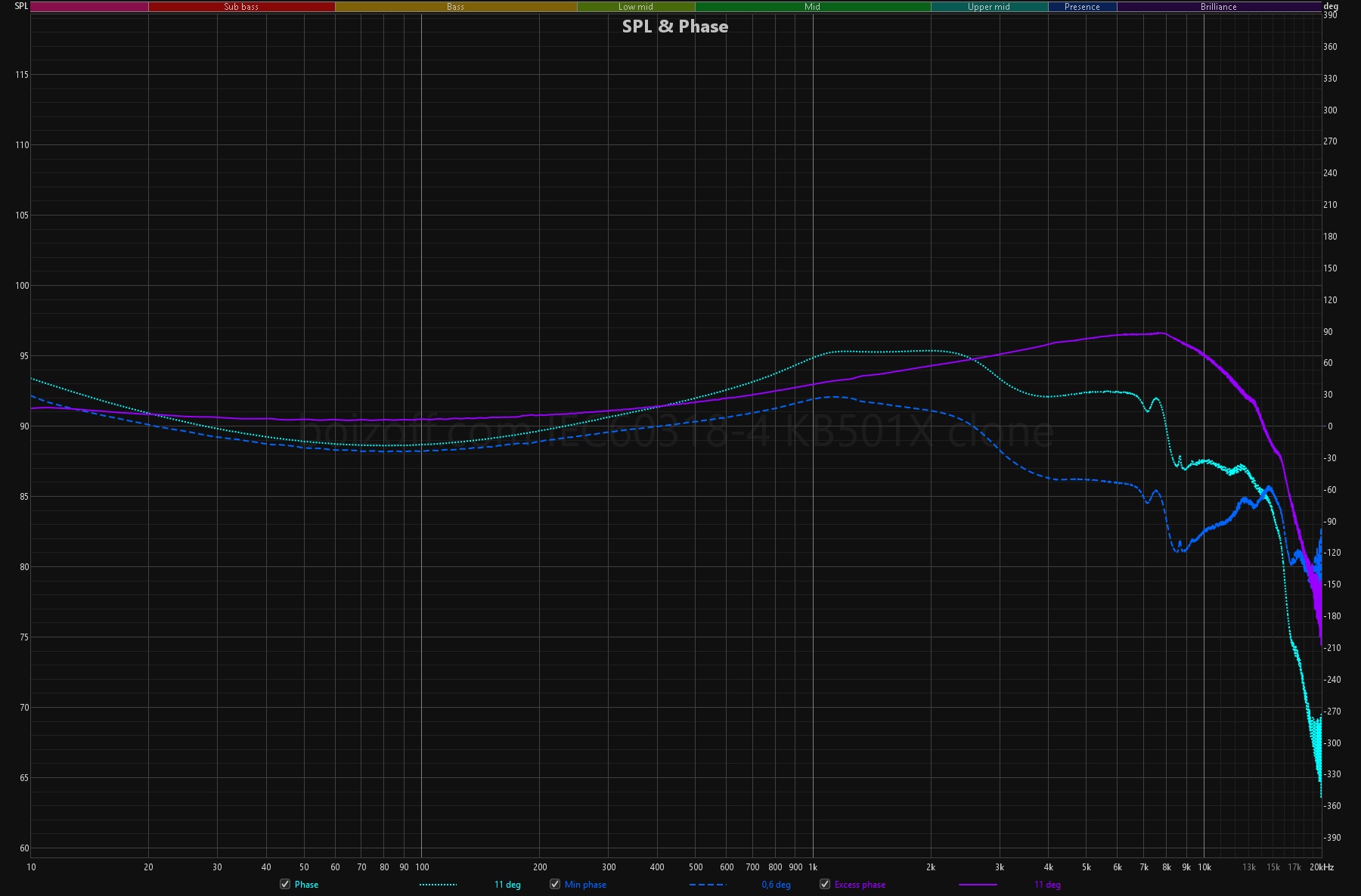
Group delay:
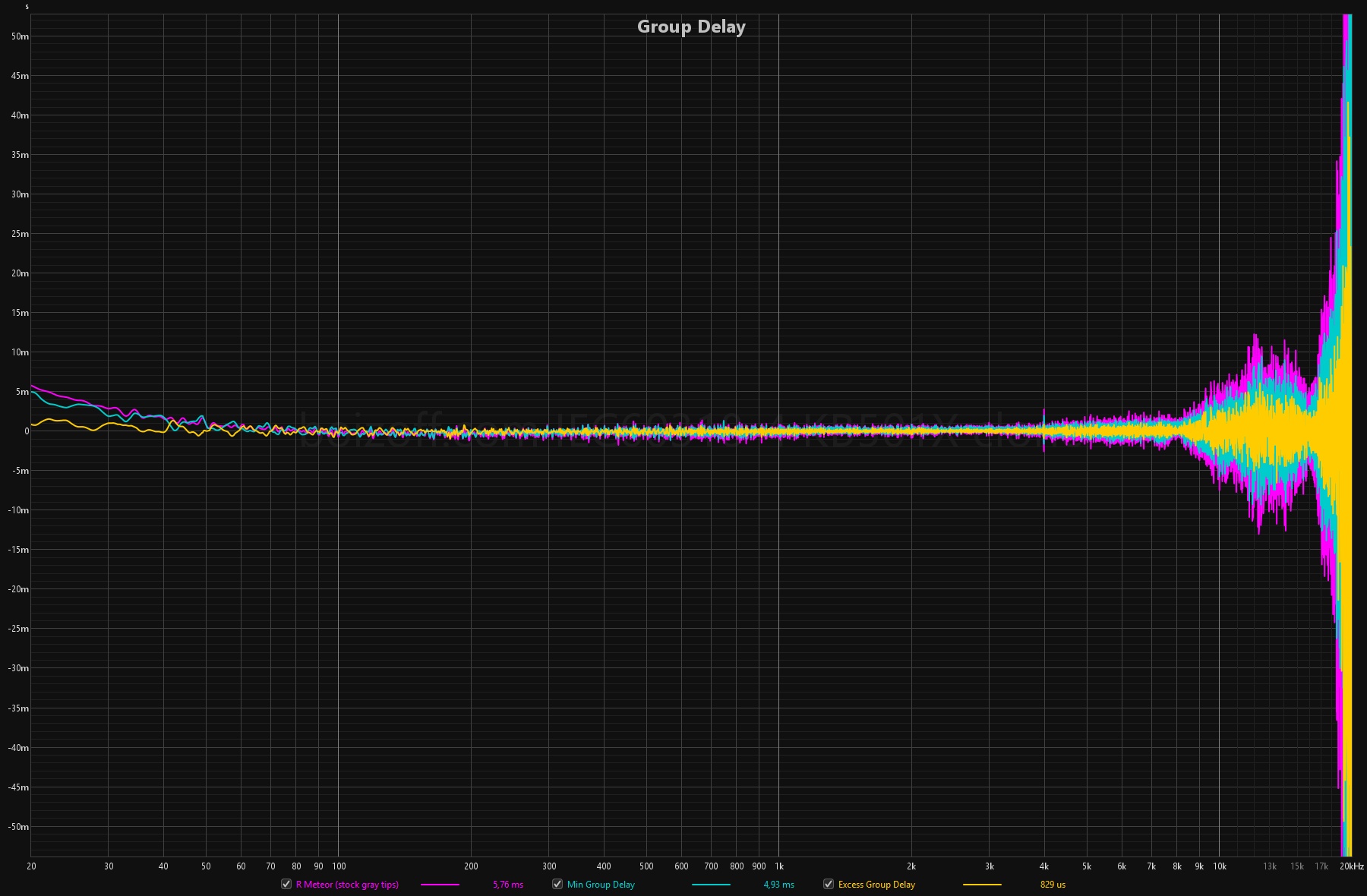
Spectrogram in the ‘Burst decay’ mode:
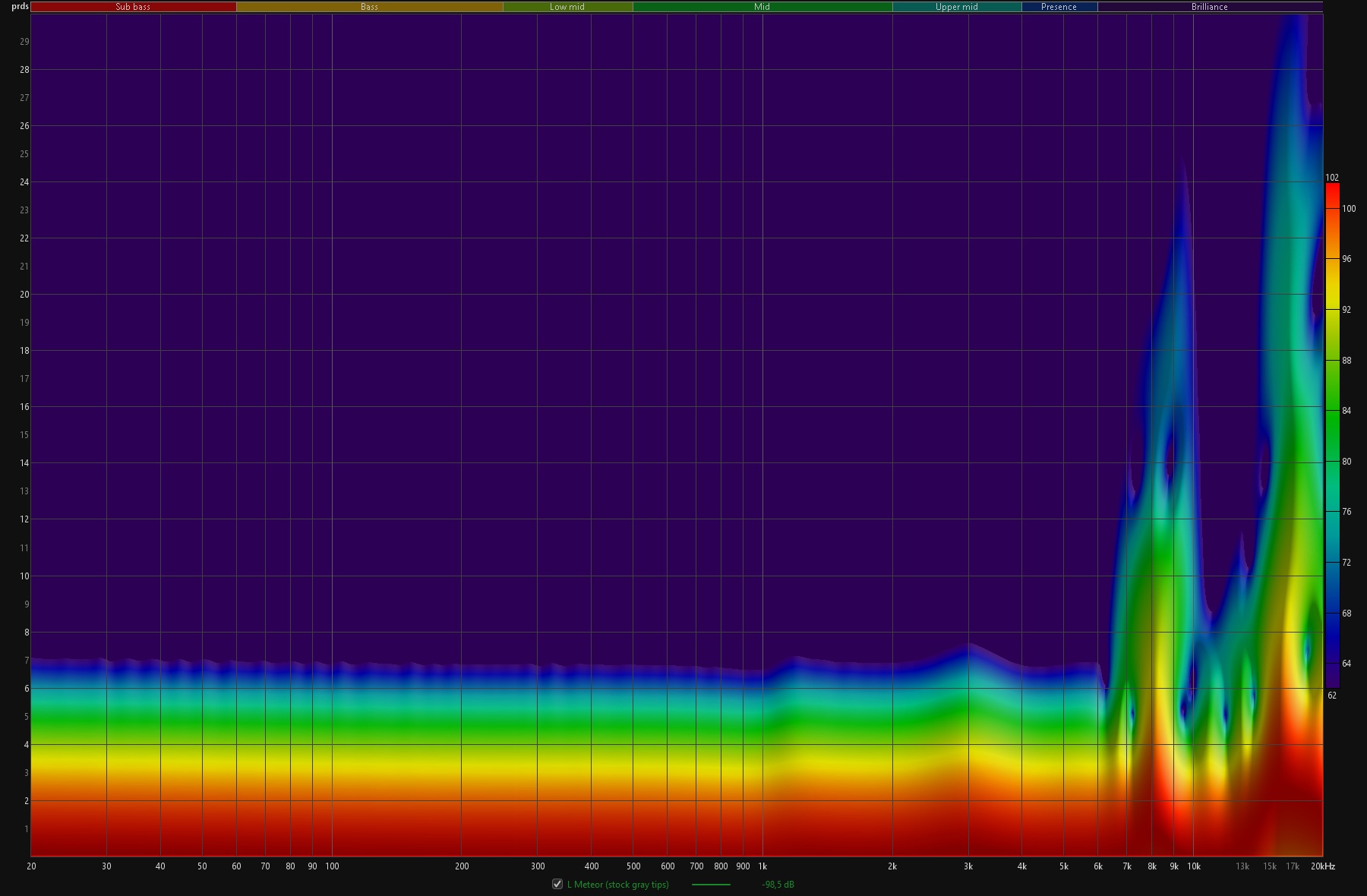
My subjective and emotional take is that in the first 15 minutes of my acquaintance with Meteor, I couldn’t understand at all what Moondrop had actually done because, compared to Meteor, even the sound of Kiwi Ears Orchestra Lite or TRI I3 MKIII is bright, emotional, gypsy-like and generally flies off the handle. That’s how ‘deadly’ neutral the sound of Meteor is. It doesn’t hide, accentuate, veil or emphasize anything at a time, and this gives an effect that is typical for neutral sound delivery: you want to turn up the volume, and these earphones respond to it in the best way. They just start playing louder, the sound becomes a little ‘more fun’, ‘livelier’ (equal loudness curves do work), but the effect persists – you just hear everything without sibilants, thumping bass, or rasping after 10 kHz. Everything just gets louder, but sounds just as ‘smooth’ and balanced.
This is a miracle.
I suppose this sound won’t hit the spot for many people because it imposes an analytical listening style. If you like working up your ears in the evening, so to speak, with metal and in beer, if you need earphones for outdoor listening to dynamic electronics, if the saxophone in your favorite free jazz should howl and moan — no way, don’t buy these earphones. They don’t work this way. At a low volume, you can listen to music in them all day long and not even notice it, but if you turn it up, and then even more, they will let you examine the musical flow in all, absolutely all intimate details, but without any embellishments.
And I’ll particularly focus on the following: having a super-stretched ‘top’, Meteor never sound sibilant, ‘sandy’, etc. on any tracks and at any volume. Never, indeed. You can listen to music with records and mastering of any degree of shittiness, and you’ll always get something between “OK” and “Oh my God, this is great!” if we talk about the quality of the high-frequency range delivery.
All in all, I completely understand why some listeners characterize the sound of these earphones with such words as ‘boring’, ‘not engaging’, ‘remote’ and ‘lifeless’. Compared to their ‘fellows’, which will be described below, it’ll be exactly like this. Some people don’t like it, but as for me, I’m thrilled to bits, although I don’t consider this sound delivery to be universal and suitable for any situation and mood (of mine).
Comparisons
We’ll make comparisons with earphones with approximately equal prices, which I included into my IEMs ranking.
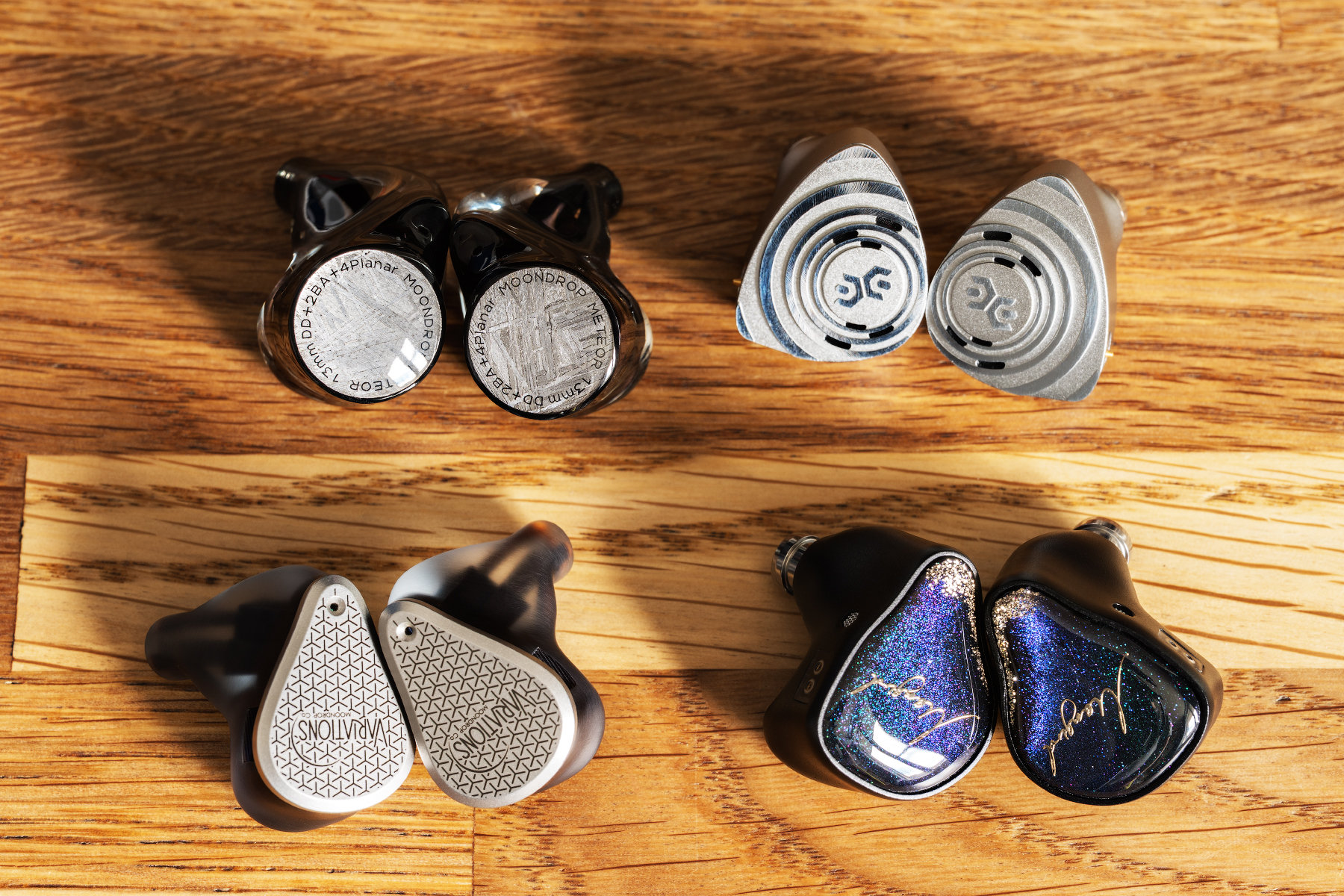
Compared to XENNS Tea Pro:
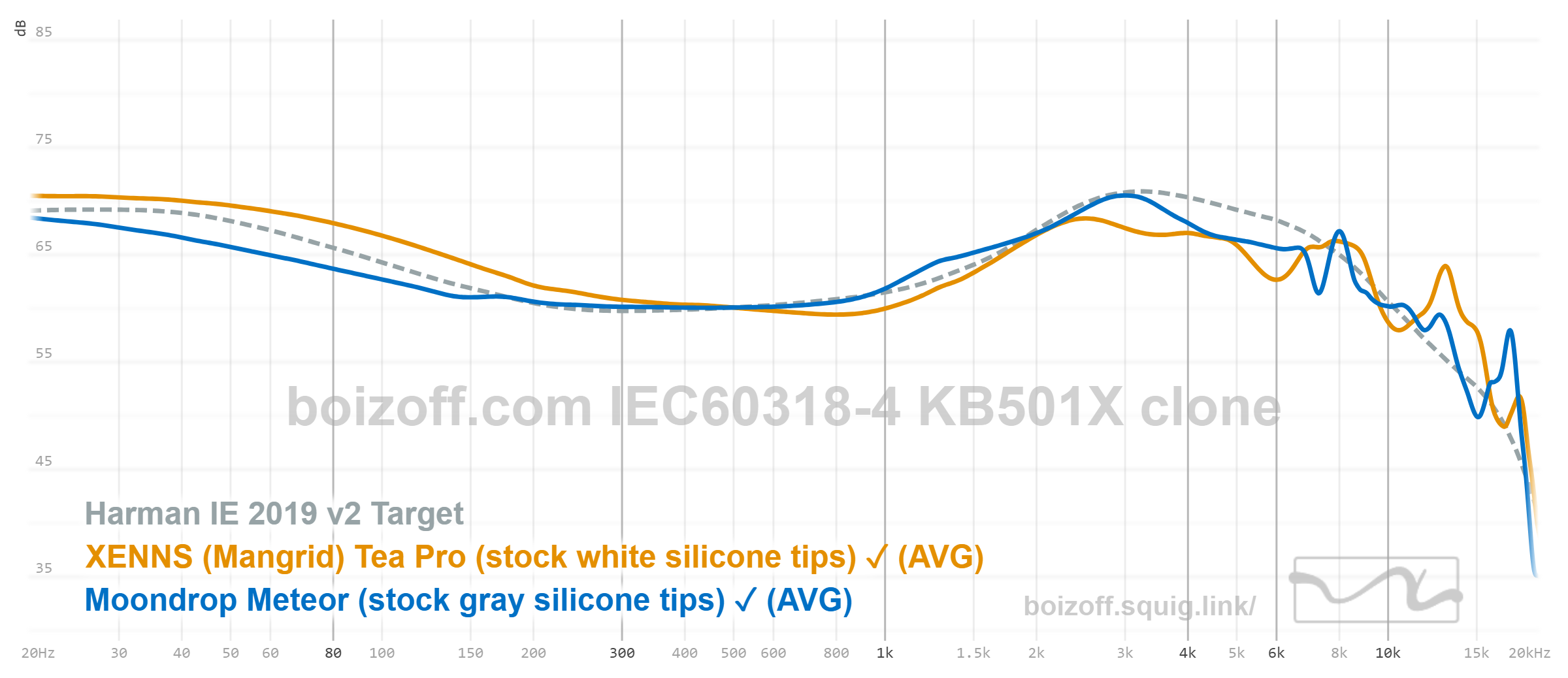
An exemplary ‘warm’ sound versus an exemplary neutral one. Laid-back, but balanced bassiness (with an emphasis at 12 kHz as a counterweight to the ‘bottom’) against deliberate temperance.
Compared to Moondrop Variations:
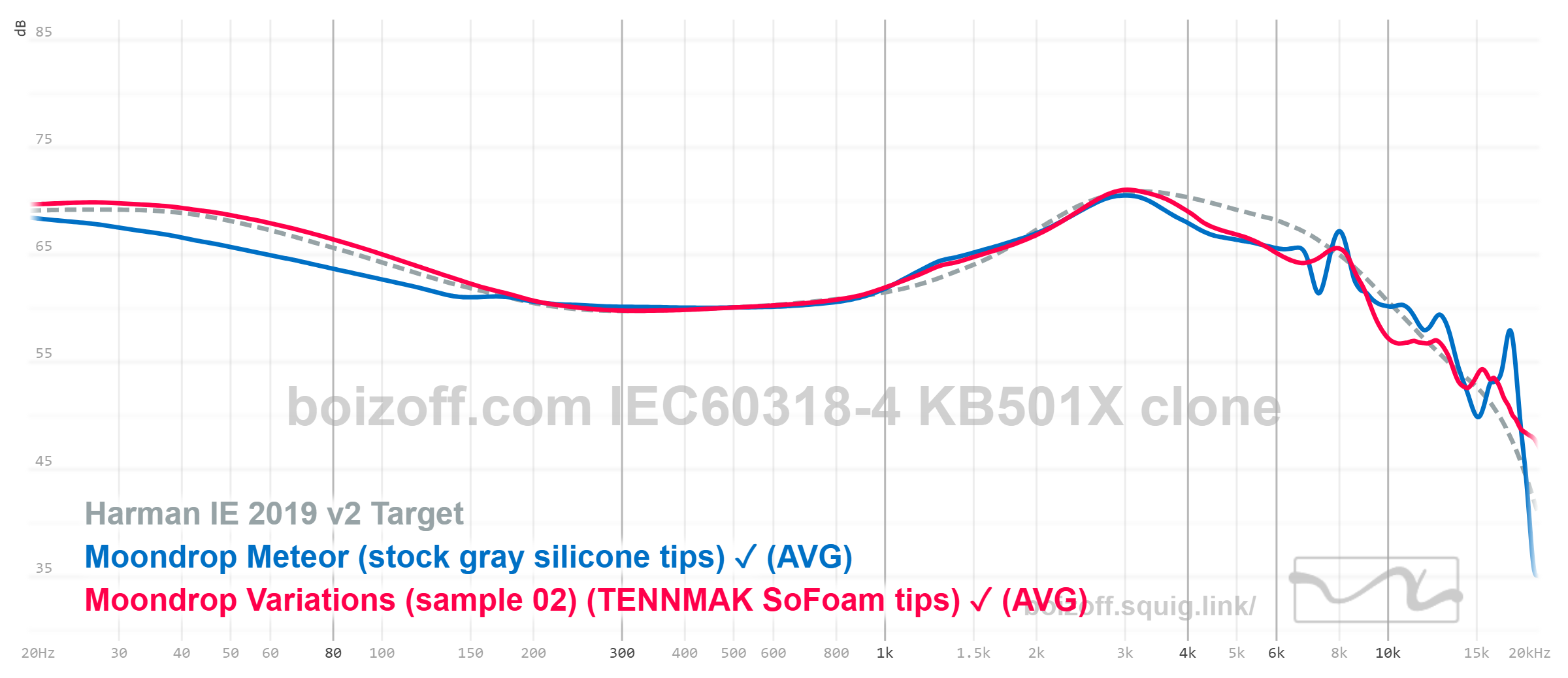
When we say Variation, we mean the ‘Harman target response curve’. There don’t seem to be many differences in frequency responses, but, firstly, Squig.link smoothes the graphs a lot, and, secondly, there are enough differences that are visible even through such smoothing to guess the main thing. This is, obviously, the subbass area. I love the Variations sound, but I can’t call it neutral. It’s ‘funny’, dynamic, a bit shrilly, whereas Meteor sound neatly, accurately and dully when compared to them.
Compared to Elysian Acoustics Pilgrim:
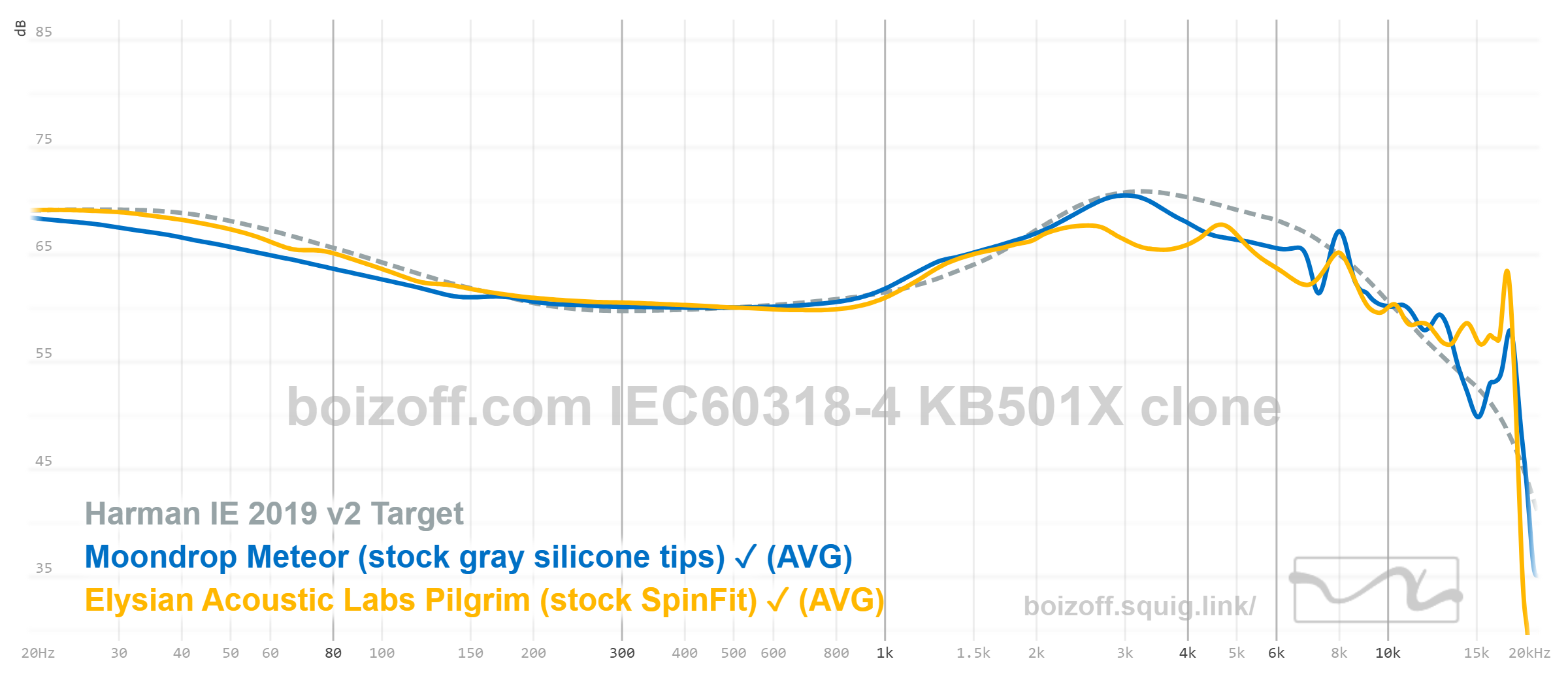
The difference between these models starts with the volume: while I would suggest listening to Meteor strongly loud, Pilgrim are tuned for a low volume, if not a whisper. An attempt to bring 3 kHz to an acceptable volume value leads Pilgrim to the sound delivery of a ‘rumbling subbass + annoying top’ kind, while Meteor begin to play just… as they should do. Good. In other words, compared to Meteor, Pilgrim’s sound delivery can no longer be called just ‘light’, but truly V-shaped.
Summary
Daniel Kahneman, a psychologist and a Nobel Prize winner, proposed a concept that our decision-making is supported by two systems: System 1 and System 2. System 1 is responsible for rapid, almost automatic decision-making based on emotional reactions. On the contrary, System 2 implements a slow analytical approach.
So, the sound of Moondrop Meteor is such that it disregards System 1 at first. It’s completely processed by System 2. System 1 comes in a little later when you begin to ‘understand’ such a sound or, in other words, get used to it. This is a strictly analytical, very ‘calm’ and ‘smooth’ sound delivery that never makes you have fun. If I may say so, it’s a deafeningly normal sound in the sense that you want to say a lot about it, but it’s hard to choose the words. How do you praise perfectly smooth and clean glass if you look through it at an incredibly beautiful landscape? Well, you can say that you don’t notice the glass at all, and that’s its main advantage. In terms of this metaphor, Meteor are ideal because they are imperceptible. They do not affect or interfere with the sound flow of musical tracks in any way to a degree I’ve never met before.
To my ear, Meteor are the most neutral, technical, and reliable earphones in terms of music reproduction that I’ve ever tested.
To buy or not to buy: if you like a sound like this, then yes, go right ahead.

